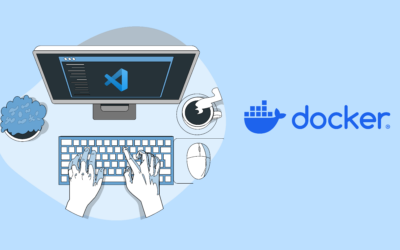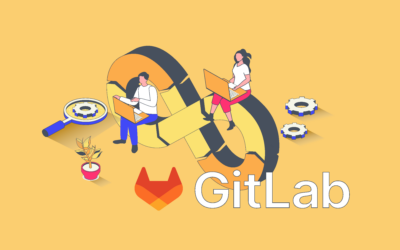Table of Content
Large Language Models (LLMs) are being adopted across industries at an unprecedented rate. From customer support and code generation to document summarization and product discovery, AI is no longer just experimental, it’s becoming embedded in core business workflows such as internal tooling, customer-facing platforms, and decision support systems.
Most of this integration is powered by APIs from providers like OpenAI, Anthropic, Google, Mistral, etc. These APIs are easy to implement: spin up a key, connect to the endpoint and you are ready to go.
But as usage scales and multiple teams or services start interacting with LLMs, new concerns emerge:
- How do we track who is using which model?
- How do we limit usage to specific teams or roles?
- How do we prevent abuse or accidental overspending?
Most of these third-party LLM providers don’t offer native multi-tenant access controls or per-user audit logs out of the box. This introduces significant operational and compliance risks for companies aiming to meet security standards like SOC 2, ISO 27001 or even internal audit policies.
For companies looking to scale AI responsibly, access control, security and auditability can’t be afterthoughts, they need to be built in from the start or risk becoming a major headache later.
This is where tools like LiteLLM come in. As a lightweight proxy layer between applications and LLM providers, LiteLLM adds control, visibility and compliance to how teams interact with AI models, without slowing down adoption.
The problem: API Access Control Gaps
In the early stages of AI adoption, teams typically begin experimenting with LLMs using a single shared API Key. It’s fast, frictionless, and gets quick results. But as usage grows, this approach quickly becomes a liability.
One key, many users. A shared API key means there’s no way to tell who is calling the model, from which application or service, how much usage is tied to a specific user or team. The lack of attribution leads to:
- Blind spots in usage, not knowing who made a call that triggered unexpected behavior.
- Uncontrolled spending, without quotas or visibility into usage, costs can quickly spiral out of control.
- Security risks: If the key leaks, anyone with it can call the API that might provide access to sensitive information.
- Friction in services, if somehow a service or a system is compromised, there’s no way to revoke access without rotating the global key, affecting all the services, applications and teams using the same API key.
No fine grained control, even if you implement some level of governance through custom wrappers or API gateways, several issues remain:
- Maintenance overhead: Custom solutions become a burden to maintain over time.
- Bypass risk: Developers can potentially bypass wrappers and access APIs directly.
- Lack of built-in limits: There’s no native support for per-user rate limiting or usage tracking.
- Limited logging: Logs often lack context unless custom logging mechanisms are implemented.
These limitations create audibility and compliance challenges, especially in regulated environments or organizations with strong internal security practices.
The more an organization relies on AI models, the more critical it becomes to shift from quick results and “just working” setups to secure, observable and governed API Access. This is where LiteLLM helps fill the gap.
What is LiteLLM
LiteLLM is an open source, drop-in proxy designed to sit between the applications or services and major LLM APIs like OpenAI, Anthropic, Azure OpenAI, Mistral, Google Gemini and others.
At its core, LiteLLM does one thing really well: standardize, control and monitor how an organization interacts with LLMs without changing the application logic.
Instead of calling a provider like OpenAI directly, the internal services, the applications or the users send requests to the LiteLLM proxy. From there, it forwards the requests, handles responses management, and enforces configurable policies, such as:
- User authentication.
- Rate limiting and quotas.
- Logging with rich metadata.
- Request filtering and blocking.
- Multi provider routing (useful for model fallback).
What sets LiteLLM apart from other similar tools is how it adds structure to LLM usage without adding friction. It supports simple deployment via Docker, Helm or custom manual install. This allows developers to create environment-specific configurations. It also offers API Key obfuscation and rotation and seamless integration with internal tools or service meshes.
Whether building internal agents, embedding LLMs in customer-facing products, or experimenting across teams, LiteLLM enables visibility and control of security demands, without slowing developers down.
LiteLLM for API Access Control
At a high level, LiteLLM acts as a programmable policy and logging layer for all LLM API traffic. This makes possible to enforce identity-based access control and auditability, without requiring application rewrites.
LiteLLM allows users and services to authenticate via:
- Custom Headers (X-API-KEY, Authorization)
- API Gateway passthrough (e.g. Gloo)
- Static token mappings (via config file or environment variables).
Each request is tagged with a unique identifier: user id, organization id, etc., enabling usage tracking per user and team, audit logs tied to actual identities, scoped limits or permissions per user or organizations, eliminating the ambiguity of shared API keys and enabling precise accountability.
Rate Limiting, Quotas and Spend Controls
Global, per-user, or per-organization configurations can be defined in the LiteLLM config file.
rate_limits:
default: 1000 # this are requests per day
organization_1: 200
user_abc: 10Configuration is essential for preventing overuse or abuse, allocating budgets across teams and setting guardrails across different models.
Logging and Auditing
LiteLLM logs every request with timestamps, user or organization identity, model used, prompt (if it’s not masked), token usage, and cost. These logs can be exported to different providers like Datadog, custom web hooks, etc. Visibility is crucial for incident response, spend analysis and compliance audits.
Request Filtering and Prompt Policies
LiteLLM allows you to enforce various allow/deny rules directly from the config file. These include:
- Model restrictions: E.g. only_allow_models: [gpt-4.1] to permit only approved models in production.
- Prompt filtering: Using regular expressions or external policy engines to detect and block risky or non-compliant content.
- User or organization-level access rules: Limiting who can access specific models or capabilities.
These controls help prevent the use of unapproved models and reduce risks, such as unintended code execution or data leakage.
Multi Provider Routing and Guardrails (Bonus)
LiteLLM supports dynamic routing to different providers or models without requiring application changes, thanks to its adherence to the chat_completions standard. This makes it easy to switch providers or models based on context, cost, or reliability needs.
For example, you can route low-risk or high-volume traffic to open-source or lower-cost models, while reserving premium models like GPT-4 for use cases that demand higher quality or accuracy. This approach helps reduce operational costs while maintaining flexibility and performance.
Dynamic routing also enables fallback strategies. If one provider is down or slow, LiteLLM can automatically reroute requests to another, improving overall reliability.
While Guardrails support is still in beta, it seems a good starting point to manage everything under the same tool. Currently LiteLLM supports guardrails from aporia and lakera, though this requires an API key to any of this service.
Together, these features turn LiteLLM into more than a proxy, it can become an AI API Gateway, enforcing policies, surfacing insights and aligning usage with the desired internal security model.
Example: Securing Access in a Multi Team Organization
Let’s say there’s an organization that has multiple teams using LLMs:
- The Marketing team using GPT-4o to generate ad copy.
- The Support team uses Claude to summarize tickets
- The Engineering team uses the Gemini model for internal tools.
Initially, each team starts by embedding raw API Keys into their tools, no logging, no user attribution, and no usage boundaries. But as adoption grows so do the problems like exceeding monthly spending without knowing which team caused it.
LiteLLM helps solve this issue by allowing teams to be defined in its configuration or dashboard and assigning a unique API Key to each. While the teams and keys need to be created and managed by your organization, LiteLLM provides the structure to enforce boundaries and track usage per group.
For example:
- Marketing: GPT-4o with a daily quota.
- Support: Claude 4 access.
- Engineering: Gemini 2.5 unlimited in dev environments, with high-usage alerts enabled.
By routing the traffic through these API Keys, LiteLLM enables logs to be tracked by team and use case. This ensures access boundaries are enforced and provides real-time visibility into usage. The result is a system that aligns with both security and budget policies, with minimal overhead, no major code rewrites, and no need for complex infrastructure.
Pros
By introducing LiteLLM as a proxy between the organization and LLM Providers, we gain immediate control over commonly overlooked areas in early AI adoption, such as:
- Security and Access Control
- Observability and Spend Management
- Compliance Readiness
- Developer Friendly Adoption.
Cons
One of the downsides of LiteLLM is that while the open-source version covers most use cases for small teams and organizations, certain advanced features, such as fine-grained dashboards and Single Sign-On (SSO) integration, require an enterprise license. For some teams, especially in the early stages or anther tight budgets the cost of the license may be a limiting factor.
Final Thoughts
As AI APIs become deeply embedded in business workflows, the conversation must evolve, not just around how to use LLMs effectively, but also how to govern and secure their usage at scale.
LiteLLM addresses this shift in conversation with a pragmatic, developer-friendly solution, offering structure, visibility, and control over LLM usage. However, it’s not a universal answer. Some organizations may require deeper integrations with internal IAM systems, native support for legacy environments, or enterprise-level analytics out of the box. In such cases, alternative tools like Gloo AI Gateway or Envoy AI Gateway might be a better fit.
Whether you are just starting to adopt LLMs across teams or already deep into AI integration. LiteLLM should be considered early in the lifecycle to ensure a smooth, secure rollout. It brings structure without friction. Even for mature setups, introducing LiteLLM doesn’t require a major refactor, it can be integrated incrementally to quickly establish access control, observability and compliance.












I found this overview of LiteLLM to be informative. From a DevOps perspective, it’s interesting to see how LiteLLM provides programmable policy and logging layers for LLM API traffic. This approach aligns with the principles of service mesh architecture and API gateways like Gloo. It’s also worth noting that devops consulting companies often emphasize the importance of identity-based access control and auditability in their implementations. I’d be curious to see more discussion on how LiteLLM handles edge cases and scalability in high-traffic environments.